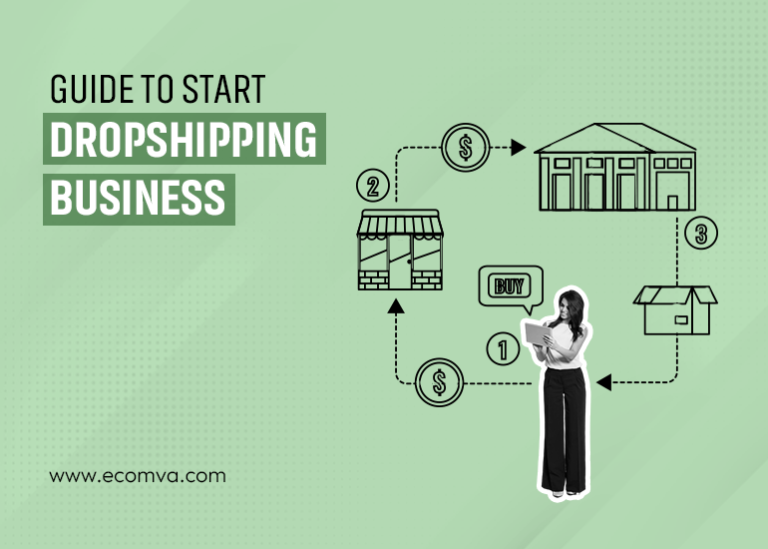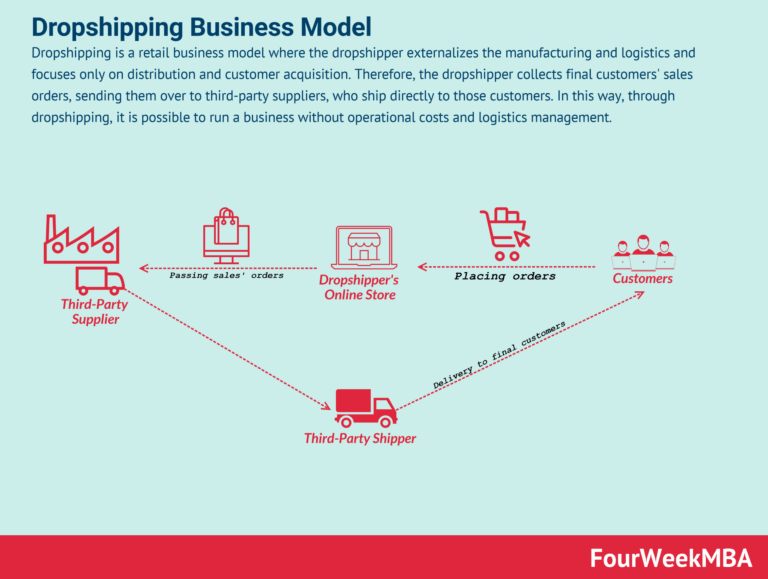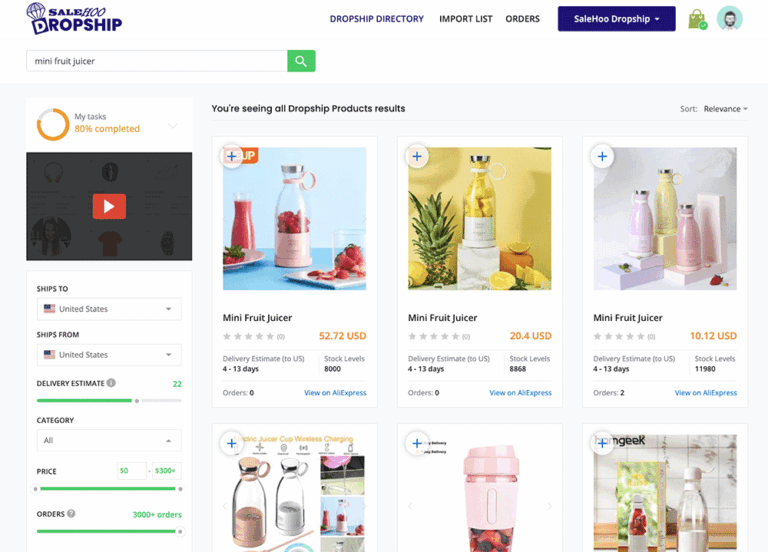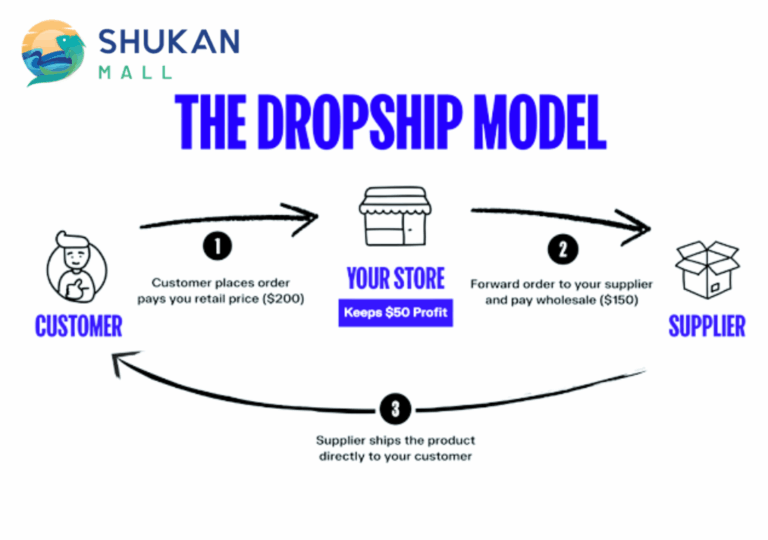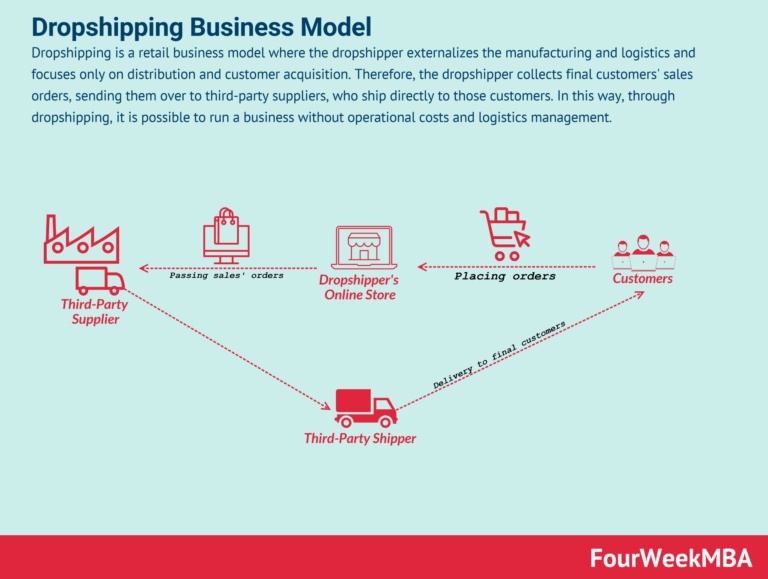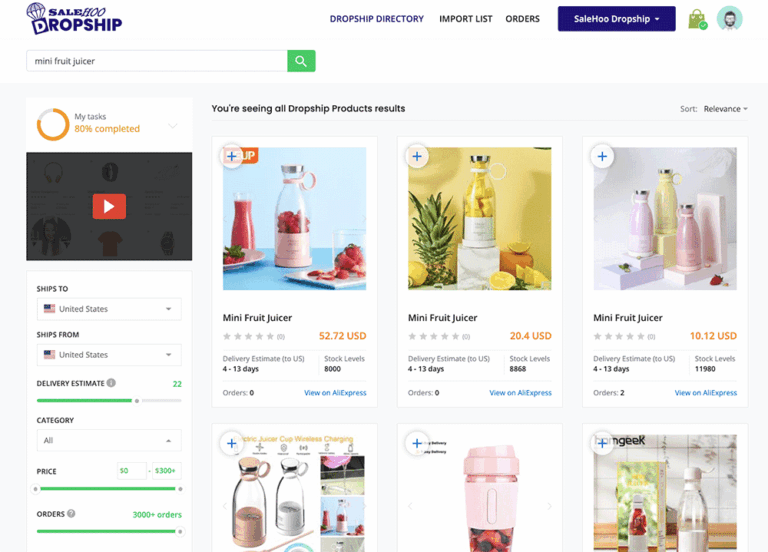How to Start Dropshipping in 2025 (A Beginner’s Guide)
Your Complete Guide to cj dropshipping
Welcome to Your Dropshipping Journey
Congratulations on taking the first step toward your entrepreneurial dream! If you’re reading this, you likely have the ambition to start your own business, and that’s a fantastic place to begin. The world of e-commerce is buzzing with opportunities, and dropshipping stands out as a particularly appealing model for new entrepreneurs.
So, what exactly is dropshipping? In simple terms, dropshipping is a retail fulfillment method where you, the seller, don’t have to keep products in stock. Instead, when you sell a product, you purchase the item from a third party—usually a wholesaler or manufacturer—who then ships it directly to your customer. This means you can start a business without the hefty investment in inventory, allowing you to focus on marketing and customer service instead.
The allure of dropshipping lies in its low startup costs and incredible flexibility. You can operate your business from anywhere in the world, whether it’s from your home office or a beach in Bali. You can choose what products to sell based on market trends, and you can quickly pivot your offerings without the financial burden of unsold stock. This model empowers you to test different niches and products with minimal risk, making it ideal for aspiring entrepreneurs like you.
In this guide, we will provide you with a comprehensive roadmap to help you navigate the dropshipping landscape using CJdropshipping, a leading platform known for its vast product selection, efficient order fulfillment, and dedicated support. You’ll learn how to identify winning products, connect your store, automate order processing, and ultimately, make your first sale.
We’ll cover every step of the process, from sourcing products to setting up your online store, and even tips for marketing your offerings effectively. Each section will be packed with actionable insights that you can implement immediately, helping you build a solid foundation for your business.
Remember, every successful entrepreneur started just like you—with a dream and the determination to turn it into reality. With the right tools, guidance, and a bit of perseverance, you too can achieve your goals and make your entrepreneurial dreams come true. Let’s embark on this exciting journey together!
What You’ll Learn In This Guide
- Your Complete Guide to cj dropshipping
- How Does Dropshipping Actually Work? A Step-by-Step Breakdown
- The Pros and Cons of Dropshipping: Is It Right for You?
- Step 1: Finding a Profitable Niche and Winning Products
- Step 2: Choosing the Right Dropshipping Suppliers
- Step 3: Building Your Online Store
- Step 4: Marketing Your Dropshipping Business to Get Sales
- Common Mistakes to Avoid as a Beginner
- Frequently Asked Questions (FAQs) about cj dropshipping
- Conclusion: Your Next Steps to Launching Your Business
- Important Disclaimer
How Does Dropshipping Actually Work? A Step-by-Step Breakdown
Understanding the Dropshipping Model: A Step-by-Step Breakdown
Starting a dropshipping business can be an exciting venture for aspiring entrepreneurs. The dropshipping model allows you to operate an online store without the need for inventory or upfront investment in products. Instead, you act as a digital storefront and middleman, connecting customers with suppliers. Let’s break down the process into clear, actionable steps.
1. Customer Places an Order on Your Online Store
The journey begins when a customer visits your online store and decides to make a purchase. They browse your product listings, select items they want, and proceed to checkout. At this point, they enter their payment information and finalize the order. This step is crucial because it sets the stage for the entire transaction.
2. You Receive the Payment
Once the customer completes their order, you receive the payment directly into your merchant account. This amount typically includes the retail price of the product, plus any applicable taxes and shipping fees. For example, if a customer buys a product for $50, that amount is credited to your account.
3. You Forward the Order to Your Supplier
After receiving the payment, you will need to process the order by forwarding it to your supplier. This is where your dropshipping partner, such as CJdropshipping, comes into play. You will provide them with the customer’s shipping details and the specifics of the order. In many cases, dropshipping platforms offer automated systems that sync your store’s orders directly to your supplier, streamlining this step.
4. The Supplier Ships the Product Directly to the Customer
Once your supplier receives the order, they pick, pack, and ship the product directly to your customer. This is a key feature of dropshipping: you never handle the product yourself. The supplier manages the logistics, ensuring that the product reaches your customer in a timely manner. You can also track the shipment using the tracking information provided by the supplier.
Flow of Money and Goods
Let’s visualize the flow of money and goods in this process:
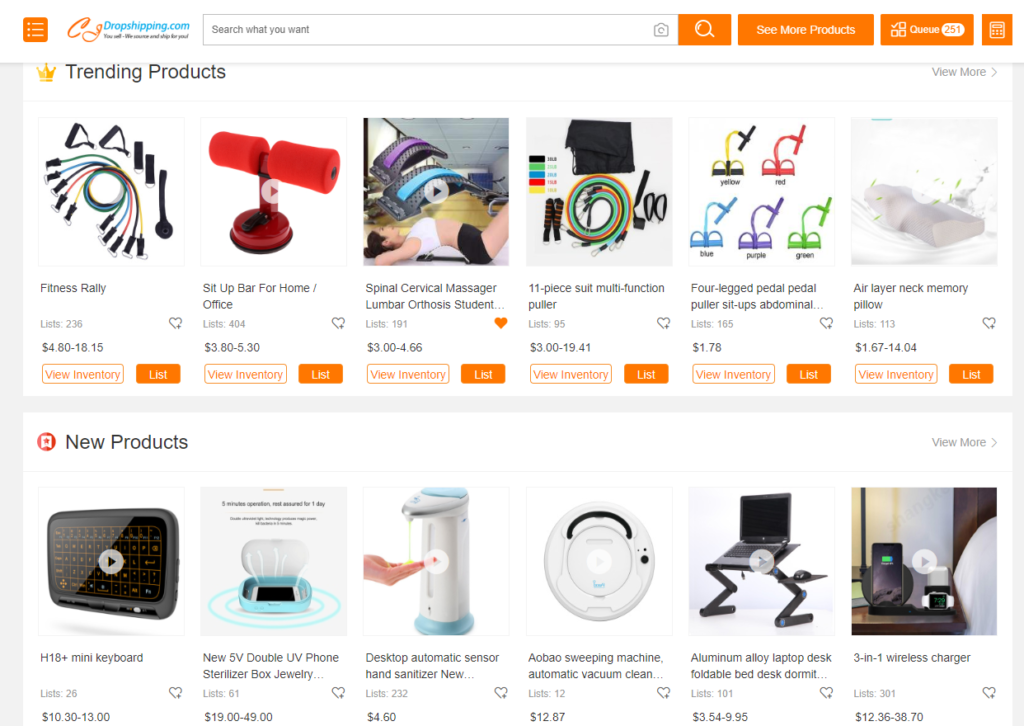
- Customer to You: The customer pays you $50 for the product.
- You to Supplier: You then pay the supplier a wholesale price (let’s say $30) to fulfill the order.
- Supplier to Customer: The supplier ships the product directly to the customer.
In this example, you profit $20 from the transaction. This model allows you to earn money without the risks associated with holding inventory, making it an ideal option for those starting out.
Analogy: The Digital Storefront and Middleman
Think of yourself as a restaurant owner who doesn’t cook the food. Instead, you take orders from customers and communicate with the kitchen (your supplier) to prepare the meals (products) that are then served directly to the customers. You create a menu (your product listings), manage the dining experience (customer service), and handle payments, while the kitchen takes care of the actual food preparation and delivery.
Conclusion
The dropshipping model is a powerful business strategy that offers flexibility and minimal financial risk. By following these steps—receiving orders, processing payments, forwarding details to suppliers, and ensuring direct shipping—you can build a successful online business. Embrace this model, leverage the resources available through platforms like CJdropshipping, and watch your entrepreneurial dreams take flight!
The Pros and Cons of Dropshipping: Is It Right for You?
Advantages of Dropshipping (Pros) vs. Challenges of Dropshipping (Cons)
| Advantages of Dropshipping (Pros) | Challenges of Dropshipping (Cons) |
|---|---|
| Low Financial Risk | Low Profit Margins |
| Minimal Startup Costs | High Competition |
| Wide Product Range | Inventory Management Issues |
| Flexibility and Scalability | Supplier Reliability |
| No Need for Physical Inventory | Customer Service Complexity |
| Access to Global Markets | Marketing and Branding Challenges |
| Automation and Streamlined Processes | Shipping Challenges |
Expanding on the Advantages
Low Financial Risk
One of the most appealing aspects of dropshipping is the low financial risk involved. Unlike traditional retail models, where you must purchase inventory upfront, dropshipping allows you to list products without any initial investment. You only pay for items after you’ve made a sale, meaning your cash flow is not tied up in unsold stock. This is particularly beneficial for beginners or aspiring entrepreneurs who may not have significant capital to invest.
Minimal Startup Costs
Starting a dropshipping business often requires little more than setting up an online store, which can be done on platforms like Shopify or WooCommerce. Many dropshipping suppliers, such as CJdropshipping, offer free or low-cost integrations, making it easy to get started without hefty overheads. This accessibility lowers the barrier to entry, allowing more individuals to explore entrepreneurship.
Wide Product Range
Dropshipping gives you access to a vast array of products from multiple suppliers, enabling you to cater to diverse customer preferences without the limitations of inventory. You can quickly pivot your product offerings based on market trends or customer feedback, making it easier to find winning products and capitalize on emerging niches.
Expanding on the Challenges
Low Profit Margins
While dropshipping can be a low-risk business model, it’s essential to be aware that profit margins are typically lower compared to traditional retail. Because you’re not buying in bulk, you may pay higher per-unit costs, which can lead to slimmer margins. This means you will need to sell a higher volume of products to achieve your financial goals. It’s crucial to conduct thorough market research and pricing strategies to ensure your pricing covers costs while remaining competitive.
High Competition
The low barrier to entry for dropshipping has led to increased competition across various niches. Many entrepreneurs are vying for the same customer base, making it difficult to differentiate your brand. To succeed, you’ll need to invest in effective marketing strategies, build a strong brand identity, and offer unique value propositions that resonate with your target audience.
Supplier Reliability
Another significant challenge in dropshipping is ensuring the reliability of your suppliers. If a supplier experiences delays, quality control issues, or fails to fulfill orders, it reflects poorly on your business. This can lead to dissatisfied customers and damage your brand’s reputation. To mitigate this risk, it’s advisable to thoroughly vet suppliers, maintain open lines of communication, and have contingency plans in place.
Conclusion
In summary, dropshipping offers a unique opportunity for aspiring entrepreneurs to enter the e-commerce space with minimal financial risk and overhead. However, it’s essential to recognize the challenges that come with this business model, including low profit margins and high competition. By understanding both the advantages and challenges, you can make informed decisions that align with your business goals.
As you embark on your dropshipping journey, consider leveraging platforms like CJdropshipping, which provide robust tools for product sourcing, order fulfillment, and customer support. With the right strategy, dedication, and adaptability, you can build a successful dropshipping business that not only meets your financial goals but also provides value to your customers.
Step 1: Finding a Profitable Niche and Winning Products
What Makes a Good Niche?
Selecting the right niche is critical to the success of your dropshipping business. A good niche should meet several criteria:
-
Passion and Interest: Choose a niche that you are genuinely passionate about. This makes it easier to stay motivated and engaged with your business, even during challenging times.
-
Market Demand: Research the demand for your niche. A niche with a growing market is more likely to provide consistent sales. Tools like Google Trends can help you analyze search volume over time.
-
Competition Analysis: While competition can indicate market viability, too much can make it difficult to stand out. Look for niches where you can offer unique value or target a specific audience segment.
-
Profit Margins: Ensure your niche can support good profit margins. Aiming for products with a selling price that is significantly higher than your costs (including shipping and supplier fees) will help maintain profitability.
-
Target Audience: Identify who your potential customers are. Understanding their demographics, preferences, and pain points will help you tailor your marketing strategies effectively.
How to Brainstorm Niche Ideas
Finding a niche can feel overwhelming, but breaking it down into manageable steps can help. Here are some strategies to brainstorm niche ideas:
-
Personal Interests and Hobbies: Start by listing your hobbies, interests, and skills. Consider how you could turn these into a business. For example, if you love fitness, you might explore niches related to workout gear or nutrition supplements.
-
Marketplaces and Platforms: Explore popular online marketplaces like Amazon, Etsy, and eBay. Look for best-selling products and categories that resonate with you. Pay attention to customer reviews to identify common pain points that you could address.
-
Social Media Trends: Utilize social media platforms like Instagram, Pinterest, and TikTok to spot emerging trends. Follow influencers in your areas of interest and observe what products they promote. Use tools like BuzzSumo to find trending topics and products.
-
Keyword Research: Use keyword research tools like Ahrefs or Ubersuggest to find high-volume search terms related to your interests. This can help you discover niches that have significant search traffic but may not be oversaturated.
-
Problem-Solving: Think about common problems people face in daily life. Can you create or source products that provide solutions? Items that solve a specific problem often have a ready market.
Validating Your Niche
Once you have a list of potential niches, it’s crucial to validate them before fully committing. Here’s how to do it:
-
Market Research: Analyze the market demand using tools like Google Trends, SEMrush, or Ahrefs. Look for consistent interest over time rather than fleeting trends.
-
Competitor Analysis: Identify your competitors within the niche. Analyze their offerings, pricing, and customer engagement. Tools like SimilarWeb can help assess competitor traffic and demographics.
-
Engage with Potential Customers: Use surveys or social media polls to gather feedback from your target audience. Ask about their preferences, needs, and willingness to purchase products in your niche.
-
Test with Minimal Viable Products (MVP): Consider launching a small collection of products to test the waters. Use platforms like Shopify to set up a basic store and track sales and customer feedback.
-
Evaluate Profitability: Calculate the potential costs versus the expected selling prices. Ensure that your chosen niche can provide adequate profit margins after considering all expenses.
Methods for Finding Winning Products
Finding winning products is key to your dropshipping success. Here are effective methods to identify these products:
-
Supplier Marketplaces: Platforms like CJdropshipping, AliExpress, and Oberlo offer vast catalogs of products. Use their filtering options to find trending items or those with high sales volumes.
-
Social Media and Influencer Marketing: Monitor social media for trending products. Check platforms like Instagram and TikTok for viral products. Influencers often highlight products that resonate well with their audiences.
-
Google Trends and Keyword Tools: Use Google Trends to identify products that are gaining traction. Pair this with keyword research tools to see what people are searching for related to those products.
-
Customer Reviews and Feedback: Analyze reviews on product listings to understand what customers like and dislike. This can help you pinpoint features that are in demand or areas where existing products fall short.
-
Criteria for Good Dropshipping Products:
- Price Point: Aim for products priced between $20 and $100. This range typically allows for a good markup while remaining affordable for most consumers.
- Scarcity: Products that are not easily found in local stores can drive online sales. Unique or specialty items often attract more attention.
-
Problem-Solving: Products that address specific pain points tend to sell well. Always ask yourself if the product provides a solution.
-
Trend Analysis Tools: Use tools like Trend Hunter or Jungle Scout to spot emerging trends. These platforms provide insights into consumer behavior and product performance.
-
Community Engagement: Join forums and groups related to your niche. Platforms like Reddit and Facebook Groups can offer valuable insights into what products potential customers are discussing and seeking.
Conclusion
Embarking on your dropshipping journey requires thoughtful planning and research. By carefully selecting a niche, validating it, and identifying winning products, you lay the groundwork for a successful business. Remember to stay adaptable and continually assess market trends and customer feedback to refine your offerings. With dedication and the right strategies, you can build a thriving online store that meets the needs of your target audience. Happy dropshipping!
Step 2: Choosing the Right Dropshipping Suppliers
Understanding the Importance of Choosing the Right Dropshipping Suppliers
Selecting the right dropshipping suppliers is crucial for the success of your online business. The suppliers you choose will directly affect your product quality, shipping times, and overall customer satisfaction. In this section, we will explore various platforms to help you identify reliable suppliers, focusing on AliExpress, CJ Dropshipping, and USA-based suppliers. Each platform has its pros and cons, and understanding these can guide you in making an informed choice.
1. AliExpress
AliExpress is one of the most popular platforms for dropshipping, especially for beginners. It offers a vast range of products from various suppliers, making it easy to find items that fit your niche.
Pros:
- Wide Product Range: AliExpress boasts millions of products across numerous categories, allowing you to find almost anything you want to sell.
- Low Prices: With factory-direct pricing, you can often find products at a low cost, enabling good profit margins.
- No Upfront Costs: You don’t need to purchase inventory upfront, reducing your initial investment risk.
- User-Friendly Interface: The platform is straightforward, making it easy for beginners to navigate.
Cons:
- Long Shipping Times: Many suppliers ship from China, which can lead to longer delivery times, potentially frustrating customers.
- Variable Quality: Product quality can vary significantly between suppliers, making it essential to conduct thorough research.
- Limited Customer Support: AliExpress does not provide personalized support; you’ll need to manage supplier relationships independently.
2. CJ Dropshipping
CJ Dropshipping has gained popularity as a comprehensive solution for dropshippers, offering not just a platform to source products but also logistics and fulfillment services.
Pros:
- Global Warehousing: CJ has warehouses worldwide, allowing for faster shipping times depending on your target market.
- Product Customization: You can create custom packaging and private label products, enhancing your brand identity.
- Automation Tools: CJ offers various automation features, including order fulfillment and inventory management, which can save you time and reduce errors.
- Dedicated Support: Each user is assigned a personal agent who can assist with sourcing and resolving issues, providing a more personalized experience.
Cons:
- Learning Curve: The platform can be complex for beginners due to its wide range of features.
- Costs May Add Up: While the initial service is free, additional fees for certain features may apply, so understanding the pricing structure is essential.
- Dependence on Platform: Relying solely on one supplier can be risky; if they face issues, your business could be affected.
3. USA-Based Suppliers
Using USA-based suppliers is an excellent option for dropshippers targeting the North American market. These suppliers can provide faster shipping times and often higher product quality.
Pros:
- Faster Shipping: Domestic shipping means quicker delivery times, enhancing customer satisfaction and reducing return rates.
- Higher Quality Control: USA-based suppliers often adhere to stricter quality control standards, leading to better product consistency.
- Easier Returns: Handling returns is simpler and more cost-effective when working with domestic suppliers.
- Customer Service: You may find better communication and support from suppliers located in the same country as your business.
Cons:
- Higher Prices: Products from USA-based suppliers can be more expensive than those from international sources, which may reduce your profit margins.
- Limited Product Range: The selection may not be as extensive as what’s available on platforms like AliExpress or CJ Dropshipping.
- Minimum Order Quantities: Some suppliers may require you to meet minimum order quantities, which could be a barrier for new entrepreneurs.
What to Look for in a Good Supplier
When choosing a dropshipping supplier, keep the following checklist in mind to ensure you make the right choice:
-
Communication: Ensure the supplier is responsive and easy to communicate with. Quick and clear communication is vital for resolving issues and getting answers to your questions.
-
Shipping Times: Investigate the average shipping times to your target market. Faster shipping can significantly enhance customer satisfaction.
-
Product Quality: Order samples when possible to evaluate the quality of the products firsthand. High-quality products lead to happier customers and fewer returns.
-
Return Policies: Review the supplier’s return policy. A clear and fair return policy will make handling customer returns more manageable.
-
Pricing and Fees: Understand the pricing structure, including any hidden fees. Ensure that you can maintain healthy profit margins.
-
Reviews and Ratings: Check for supplier reviews and ratings on platforms like Trustpilot, Google, or social media. Positive feedback from other dropshippers can be a strong indicator of reliability.
-
Scalability: Consider whether the supplier can handle increased order volumes as your business grows. Choose suppliers who can scale with you.
-
Integration Capabilities: Look for suppliers that can easily integrate with your e-commerce platform, allowing for seamless order processing and inventory management.
Conclusion
Choosing the right dropshipping supplier is a pivotal step in your e-commerce journey. Whether you opt for AliExpress, CJ Dropshipping, or USA-based suppliers, each has its unique advantages and challenges. By conducting thorough research and utilizing the checklist provided, you can find suppliers that align with your business goals, ensuring a successful dropshipping experience. Remember, the foundation of your business lies in the partnerships you build, so take the time to choose wisely. Happy dropshipping!
Step 3: Building Your Online Store
Setting Up Your Online Store for Dropshipping Success
Building an online store for dropshipping can be an exciting venture, especially when you choose a robust platform like Shopify. With its user-friendly interface and powerful features, Shopify is the go-to choice for many aspiring entrepreneurs. Let’s walk through the essential steps to get your store up and running.
1. Choosing a Shopify Plan
Before diving into the design and setup of your store, the first step is selecting a Shopify plan that suits your business needs. Shopify offers several pricing tiers:
- Basic Shopify: Best for new businesses, providing essential features to get started.
- Shopify: Offers additional features for growing businesses, including more advanced reporting.
- Advanced Shopify: Ideal for larger businesses that require extensive reporting and lower transaction fees.
Evaluate your budget and expected growth. Starting with the Basic plan is a sensible choice for beginners, allowing you to upgrade as your business expands.
2. Picking a Theme
Once you’ve chosen your plan, it’s time to select a theme for your store. Shopify offers a wide range of free and premium themes that cater to various niches. Here’s how to choose the right one:
- Niche Relevance: Select a theme that aligns with your product offerings. For example, a clean and minimalistic theme works well for fashion, while a vibrant theme might suit tech gadgets.
- Responsive Design: Ensure the theme is mobile-friendly, as a significant portion of e-commerce traffic comes from mobile devices.
- Customization Options: Look for themes that allow you to customize layouts, colors, and fonts easily. This flexibility will help you create a unique brand identity.
To access themes, go to the Online Store > Themes section in your Shopify dashboard. You can explore free themes or purchase premium ones from the Shopify Theme Store.
3. Setting Up Essential Pages
Creating essential pages is crucial for building trust and providing necessary information to your customers. Here are the key pages to include:
- About Us: Share your story, mission, and values. This helps customers connect with your brand on a personal level.
- Contact Us: Provide multiple ways for customers to reach you, including an email address, phone number, and a contact form.
- Policies: Clearly outline your return, shipping, and privacy policies. This transparency is vital for building customer trust and ensuring compliance with regulations.
You can easily create these pages in Shopify by navigating to Online Store > Pages. Use a clear and friendly tone to communicate your message.
4. Installing Key Apps
To enhance your dropshipping experience, installing the right apps is essential. Here are some must-have apps for your Shopify store:
- CJdropshipping: This app allows you to easily import products from CJdropshipping into your store, manage orders, and automate fulfillment. It streamlines the entire dropshipping process, making it efficient and hassle-free.
- DSers: Another popular import tool that simplifies product sourcing and order management. It’s compatible with AliExpress, making it a good choice if you plan to use multiple suppliers.
- Oberlo: If you’re sourcing from AliExpress, Oberlo is a fantastic option for importing products and managing orders.
To install apps, visit the Shopify App Store, search for the desired app, and click Add app to integrate it into your store.
5. Setting Up Payment Gateways
Once your store is designed and stocked with products, it’s essential to set up payment gateways. Shopify supports various payment methods, allowing you to cater to a broader audience. Here’s how to set it up:
- Shopify Payments: This is Shopify’s built-in payment processor, offering a seamless checkout experience. It supports major credit cards and is easy to set up.
- PayPal: A widely used payment method that many customers prefer for its security. It’s simple to integrate with your Shopify store.
- Other Payment Gateways: Depending on your target market, consider adding additional payment options such as Stripe, Authorize.net, or local payment processors.
To configure your payment settings, go to Settings > Payments in your Shopify dashboard. Follow the prompts to set up your preferred payment methods.
Alternative: WooCommerce
While Shopify is an excellent choice for beginners, WooCommerce is another viable option, particularly if you prefer more control over your website. WooCommerce is a WordPress plugin that transforms your site into a fully functional e-commerce store. It’s highly customizable and offers a wide range of plugins, but it requires more technical know-how compared to Shopify.
Conclusion
Setting up your online dropshipping store with Shopify can be a straightforward and rewarding process. By selecting the right plan, theme, and essential apps, you’ll be well on your way to building a successful e-commerce business. Remember, the key is to stay focused on your niche, provide excellent customer service, and continuously adapt to market trends. Embrace the journey, and soon, you’ll see your dropshipping dreams come to fruition!
Step 4: Marketing Your Dropshipping Business to Get Sales
Social Media Marketing (TikTok & Instagram)
Social media platforms like TikTok and Instagram are powerful tools for promoting your dropshipping business. They allow you to reach a vast audience and engage with potential customers in a visually appealing way.
1. Create Engaging Content
- Tip: Use high-quality images and videos to showcase your products. Create content that highlights the benefits of your products, including user-generated content and testimonials.
- Example: If you sell skincare products, create before-and-after videos of customers using your products, or share quick skincare tips that incorporate your items.
2. Leverage Influencer Collaborations
- Tip: Reach out to micro-influencers in your niche who have a loyal following. Offer them free products in exchange for reviews or shout-outs on their platforms.
- Example: If you’re selling fitness gear, partner with fitness enthusiasts who can demonstrate your products in action, sharing their experience with their followers.
3. Utilize Stories and Live Features
- Tip: Use Instagram Stories and TikTok Live to showcase new arrivals, behind-the-scenes looks, or special promotions. Engage your audience with polls or Q&A sessions.
- Example: Host a live session showcasing how to use a product, and offer a limited-time discount to viewers during the session to encourage immediate purchases.
4. Run Contests and Giveaways
- Tip: Organize contests that require participants to follow your account, like your posts, and tag friends to enter. This increases your visibility and follower count.
- Example: Create a giveaway for a product bundle where participants must tag three friends in the comments, helping to spread the word about your store.
Paid Advertising (Facebook/Instagram Ads)
Paid advertising is an effective way to quickly gain visibility and drive traffic to your dropshipping store. Facebook and Instagram ads allow you to target specific audiences based on demographics, interests, and behaviors.
1. Define Your Target Audience
- Tip: Use Facebook’s Audience Insights tool to identify your ideal customer’s age, location, interests, and shopping behaviors. Tailor your ads to resonate with this audience.
- Example: If your products are eco-friendly, target audiences interested in sustainability, environmental activism, and organic products.
2. Create Eye-Catching Ad Creatives
- Tip: Invest time in designing visually appealing ad creatives. Use high-resolution images or engaging videos that capture attention quickly.
- Example: For a fashion brand, showcase a model wearing your latest collection in a vibrant setting to draw in potential customers.
3. Utilize Retargeting Campaigns
- Tip: Set up retargeting ads for users who have previously visited your website but did not make a purchase. Remind them of what they left behind with personalized ads.
- Example: If a customer viewed a specific product, create an ad that features that product along with a limited-time discount to encourage conversion.
4. Test and Optimize Your Ads
- Tip: Run A/B tests on different ad creatives, copy, and targeting options to identify what works best. Monitor performance metrics and adjust your strategy accordingly.
- Example: Test two different headlines for your ads to see which generates more clicks and conversions, then allocate more budget to the winning ad.
Search Engine Optimization (SEO)
SEO is a long-term strategy that can help your dropshipping store rank higher in search engine results, attracting organic traffic without the need for paid advertising.
1. Keyword Research
- Tip: Use tools like Google Keyword Planner or Ubersuggest to identify relevant keywords for your niche. Focus on both short-tail and long-tail keywords.
- Example: If your store sells pet accessories, target keywords like “best dog collars” and “affordable pet supplies online.”
2. Optimize Product Descriptions
- Tip: Write unique, keyword-rich product descriptions that provide value to potential customers. Avoid duplicate content, as it can harm your SEO.
- Example: Instead of just listing features, explain how the product solves a problem or enhances the customer’s life, using keywords naturally throughout.
3. Improve Website Load Speed
- Tip: Ensure your website loads quickly, as this impacts user experience and SEO rankings. Use tools like Google PageSpeed Insights to identify areas for improvement.
- Example: Optimize image sizes and reduce unnecessary plugins to enhance your site’s speed.
4. Build Quality Backlinks
- Tip: Engage in guest blogging or collaborate with other websites in your niche to gain backlinks to your store. Quality backlinks improve your site’s authority and ranking.
- Example: Write a guest post on a popular pet blog discussing “5 Essential Accessories for New Pet Owners” and include a link back to your store.
Email Marketing
Email marketing is a cost-effective strategy to nurture leads, retain customers, and promote new products or sales.
1. Build Your Email List
- Tip: Use pop-ups or lead magnets on your website to encourage visitors to subscribe to your newsletter. Offer discounts or exclusive content as incentives.
- Example: Provide a 10% discount on their first purchase in exchange for signing up for your email list.
2. Segment Your Audience
- Tip: Divide your email list into segments based on customer behavior, preferences, or purchase history. This allows for more personalized and relevant communication.
- Example: Send targeted emails featuring new arrivals to customers who previously purchased similar products.
3. Create Engaging Email Campaigns
- Tip: Craft visually appealing and informative emails that offer value. Include product recommendations, tips, or exclusive discounts to encourage engagement.
- Example: Send a monthly newsletter featuring best-selling products, customer testimonials, and informative content related to your niche.
4. Automate Your Email Marketing
- Tip: Use email marketing tools like Mailchimp or Klaviyo to automate campaigns such as welcome emails, cart abandonment reminders, and re-engagement emails.
- Example: Set up an automated cart abandonment email that reminds customers about items they left in their cart, potentially offering a discount to entice them to complete their purchase.
Conclusion
Marketing your dropshipping business effectively requires a blend of creativity, strategy, and ongoing optimization. By leveraging social media, paid advertising, SEO, and email marketing, you can build a strong brand presence and attract loyal customers. Start small, test different strategies, and continuously refine your approach to find what works best for your unique business. Remember, persistence and adaptability are key to your success in the e-commerce landscape.
Common Mistakes to Avoid as a Beginner
1. Choosing a Bad Niche
One of the most common pitfalls for beginners is selecting a niche that is oversaturated or lacks demand. A bad niche can lead to poor sales and wasted marketing efforts.
Solution: Conduct thorough market research using tools like Google Trends, social media insights, and keyword research to identify trending products and underserved markets. Look for niches that align with your interests and have a passionate audience. Validate your niche by testing product ideas with small ad campaigns before fully committing.
2. Not Testing Products
Many new dropshippers jump straight into selling products without adequately testing them. This can result in poor-quality items reaching customers and negative reviews.
Solution: Before listing any product, order samples for yourself. Evaluate the product quality, shipping times, and packaging. If possible, conduct small test runs to gauge customer interest and feedback. Tools like CJdropshipping’s trending product recommendations can also help identify which items are likely to perform well.
3. Poor Customer Service
Neglecting customer service can severely damage your brand reputation. Customers expect timely responses and resolutions to their queries or complaints.
Solution: Set up a dedicated customer service strategy that includes timely communication via email, chat, or social media. Utilize automation tools for FAQs but ensure that personal support is available for more complex issues. Regularly check in with customers post-purchase to gather feedback and build relationships.
4. Ignoring Shipping Times
Shipping delays can lead to customer dissatisfaction and increased refund requests. Many beginners underestimate the importance of clear shipping policies.
Solution: Clearly communicate estimated shipping times on your website and during the checkout process. Choose suppliers with reliable shipping methods, and consider using CJdropshipping’s local warehouses for faster delivery. Regularly monitor shipping performance and keep customers informed about their order status.
5. Unrealistic Profit Expectations
Many beginners enter dropshipping with the misconception that they can make quick, substantial profits without much effort. This often leads to disappointment.
Solution: Set realistic profit margins and understand that building a successful dropshipping business takes time and effort. Break down your financial expectations by analyzing costs such as product pricing, shipping, and marketing. Create a budget and a timeline for your business goals, and track your progress regularly.
6. Neglecting Marketing Strategies
A common mistake is assuming that listing products online is enough to generate sales. Without effective marketing, your store may go unnoticed.
Solution: Invest time in learning about digital marketing strategies such as SEO, social media marketing, and email marketing. Create engaging content that attracts your target audience. Leverage CJdropshipping’s marketing tools and analytics to understand customer behavior and optimize your campaigns.
7. Failing to Build a Brand
Many beginners treat their dropshipping business as a mere side hustle, neglecting the importance of branding. This can result in low customer loyalty and recognition.
Solution: Develop a strong brand identity that reflects your values and resonates with your target audience. Invest in professional branding elements like a logo, website design, and packaging. Use social media to share your brand story and connect with customers on a personal level.
8. Overcomplicating Operations
New dropshippers often make the mistake of complicating their operations with too many products, suppliers, or sales channels too quickly.
Solution: Start simple by focusing on a few products within your chosen niche. Gradually expand your product range and sales channels as you gain experience and understand your market better. Use CJdropshipping’s automation features to streamline order processing and inventory management.
9. Ignoring Analytics
Many beginners overlook the importance of tracking their business performance through analytics. This can lead to missed opportunities for improvement.
Solution: Regularly monitor key performance indicators (KPIs) such as conversion rates, customer acquisition costs, and return on investment (ROI). Use tools like Google Analytics and CJdropshipping’s dashboard to analyze data and make informed decisions based on your findings.
10. Not Learning from Mistakes
Lastly, some beginners become discouraged after encountering setbacks and fail to learn from their mistakes. This can hinder long-term success.
Solution: Embrace a growth mindset. Treat every mistake as a learning opportunity. Reflect on what went wrong and how you can improve in the future. Join dropshipping communities or forums to share experiences and gain insights from fellow entrepreneurs.
By being aware of these common mistakes and implementing the suggested solutions, you can set yourself up for a more successful dropshipping journey with CJdropshipping. Remember, every challenge is a stepping stone toward growth and success!
Frequently Asked Questions (FAQs) about cj dropshipping
1. What is CJ Dropshipping?
CJ Dropshipping is a comprehensive dropshipping platform that connects entrepreneurs with suppliers and manufacturers worldwide. It offers services such as product sourcing, order fulfillment, and shipping, allowing you to run an online store without holding inventory. With features like real-time inventory sync and customizable packaging, CJ Dropshipping aims to streamline the dropshipping process for beginners and experienced sellers alike.
2. How do I get started with CJ Dropshipping?
To start with CJ Dropshipping, follow these steps:
1. Create an Account: Register for free on the CJ Dropshipping website.
2. Source Products: Use the platform to find trending products that suit your niche.
3. Connect Your Store: Integrate your e-commerce store (Shopify, WooCommerce, etc.) with CJ Dropshipping.
4. List Products: Import products to your store with just a few clicks.
5. Manage Orders: Sync orders automatically and let CJ handle fulfillment and shipping.
3. Do I need to register a company to start dropshipping?
While it is not a legal requirement to register a company to start dropshipping, doing so can provide various benefits. Registering your business can help you establish credibility, open a business bank account, and potentially access tax benefits. It’s advisable to check the regulations in your country or region to ensure compliance.
4. How much money do I need to start dropshipping?
The amount of money needed to start dropshipping can vary widely based on your business model and chosen products. However, you can start with a budget as low as $100 to $500. This budget should cover your website hosting, domain registration, initial marketing efforts, and any necessary apps or tools. Keep in mind that your ongoing expenses will include marketing, transaction fees, and product costs.
5. What products can I sell through CJ Dropshipping?
CJ Dropshipping offers a vast array of products across various categories, including clothing, electronics, home goods, health and beauty, and more. You can also explore niche products, print-on-demand items, and customized merchandise to suit your target audience. Use CJ’s trending product recommendations to identify what’s currently in demand.
6. How does shipping work with CJ Dropshipping?
CJ Dropshipping provides multiple shipping options, including standard and express delivery, depending on your customers’ locations. They have several global warehouses, which can significantly reduce shipping times (often within 2-3 days for local deliveries). You can track shipments in real-time through their platform, ensuring transparency for both you and your customers.
7. How do I handle returns and refunds?
Handling returns and refunds can be done through CJ Dropshipping’s support system. When a customer requests a return, you can follow CJ’s return guidelines, which typically involve contacting your CJ agent for assistance. They will guide you through the process, including how to handle refunds. Having a clear return policy on your store can help manage customer expectations.
8. Can I customize my products and packaging?
Yes! CJ Dropshipping allows for product customization through its print-on-demand services and custom packaging options. This means you can create unique products that reflect your brand identity, such as personalized designs or branded packaging. This feature can enhance your customers’ experience and set your store apart from competitors.
9. What support does CJ Dropshipping provide for beginners?
CJ Dropshipping offers robust support for beginners, including a dedicated agent who can assist with sourcing products, resolving issues, and answering questions. Their 24/7 online support ensures that you have help whenever you need it. Additionally, they provide tutorials and resources to help you navigate the platform and improve your dropshipping skills.
10. Is CJ Dropshipping suitable for beginners?
Absolutely! CJ Dropshipping is designed with beginners in mind, offering user-friendly tools and resources to help you succeed. With its extensive support system, educational materials, and automation features, even those new to e-commerce can effectively manage their dropshipping business. Start small, learn as you go, and take advantage of the resources available to build your successful online store.
Conclusion: Your Next Steps to Launching Your Business
Embrace Your Dropshipping Journey
As you stand on the threshold of launching your dropshipping business, it’s essential to recognize that success in this field requires commitment, learning, and strategic planning. Here’s a concise roadmap to guide you through the initial steps:
-
Research Your Niche: Start by identifying a market that excites you. Analyze trends, customer demands, and competitors. Use tools like Google Trends and social media insights to pinpoint potential products.
-
Select a Reliable Supplier: Partner with a trustworthy dropshipping platform like CJdropshipping. Take advantage of their extensive product range and global fulfillment capabilities. Ensure you understand their terms, shipping times, and customer support options.
-
Set Up Your Online Store: Choose an e-commerce platform that suits your needs, such as Shopify or WooCommerce. Customize your store to reflect your brand identity and make it user-friendly.
-
List Winning Products: Utilize CJdropshipping’s product import tools to seamlessly add products to your store. Be strategic in your selections—opt for items with high demand and competitive pricing.
-
Market Your Business: Develop a marketing strategy that incorporates social media, SEO, and paid advertising. Engage with your audience and build a community around your brand.
-
Monitor and Optimize: After launching, closely track your sales and customer feedback. Use analytics to identify areas for improvement and adapt your strategies accordingly.
Remember, dropshipping is not a get-rich-quick scheme. It’s a legitimate business model that requires time, effort, and continuous learning. You will face challenges, but each obstacle is an opportunity for growth.
Take the First Step Today!
Are you ready to turn your entrepreneurial dreams into reality? The journey starts with a single step. Sign up with CJdropshipping, explore your options, and take action. Your future self will thank you for the commitment you make today. Start building your online business and embrace the adventure ahead!
Important Disclaimer
⚠️ Important Disclaimer
The information provided in this guide is for educational purposes only. Starting a business involves risks, and success is not guaranteed. Please conduct your own thorough research and consider consulting with financial and legal professionals before making any business decisions.

